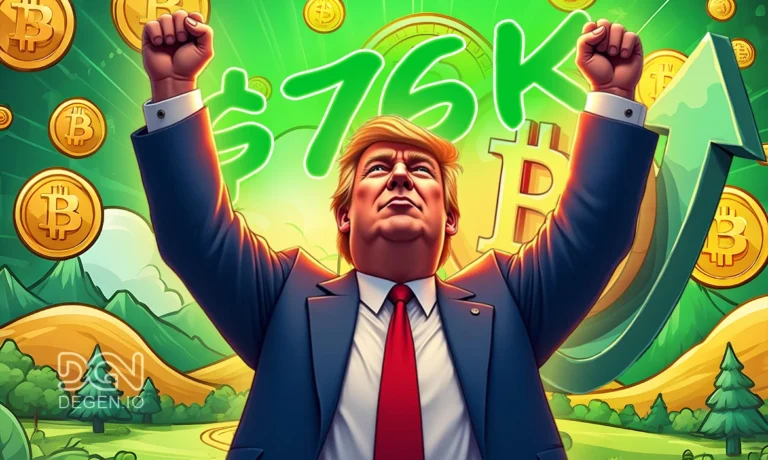As the cryptocurrency landscape matures, leading Wall Street banks like Goldman Sachs, JPMorgan Chase, and Morgan Stanley are expressing renewed interest in working with crypto firms, positioning themselves to lead potential initial public offerings (IPOs). Driven by anticipated regulatory clarity following the U.S. presidential election, this shift in interest represents a significant development for both traditional finance and the digital asset industry.
Wall Street’s Re-Emergence in Crypto: A New Opportunity
After years of caution, top investment banks are now actively seeking partnerships with cryptocurrency firms, positioning themselves as IPO underwriters for companies like Kraken, Chainalysis, and Fireblocks. Historically, Wall Street firms exercised restraint around digital assets due to perceived risks, especially during periods of market volatility. However, with evolving regulations and positive market indicators, banks are now positioning themselves to capitalize on the anticipated growth in crypto-related IPOs.
The recent post-election optimism around regulatory reform—particularly following a potential Trump administration’s return—suggests an environment conducive to growth. Industry insiders and investors expect this change to yield more favorable conditions for the digital asset sector, making it an attractive market for Wall Street to re-enter.
Regulatory Clarity: Key to Growth in the Crypto Sector

A primary driver of Wall Street’s renewed interest in crypto firms is the promise of regulatory transparency. The GOP platform, generally supportive of crypto, has bolstered hopes for a regulatory framework that could establish clear guidelines and consistent standards for crypto-related businesses. Donald Trump’s potential victory in the U.S. election is perceived as a catalyst for this transformation, paving the way for increased legitimacy and fostering investor confidence.
In the last few years, regulatory uncertainties around cryptocurrencies prevented banks from aggressively expanding into the crypto sector. Banks were cautious due to concerns about potential regulatory action and reputational risks. Now, as this regulatory landscape shows signs of settling, the potential for collaboration and investment in the digital asset sector is attracting renewed attention from major financial institutions.
Potential for Crypto IPOs: Why Wall Street is Eager
Crypto IPOs represent significant growth opportunities for investment banks, both in terms of revenue and market expansion. IPOs for companies like Kraken, a prominent crypto exchange, or Chainalysis, a blockchain analytics firm, could provide traditional investors with exposure to the crypto market and increase Wall Street’s stake in digital finance. The increased appetite for risk among investors—coupled with more stable market conditions—has shifted the perspective on crypto firms, making IPOs a lucrative and exciting opportunity.
This shift reflects broader market optimism. “The bankers hope to score some lucrative IPOs that cryptocurrency companies could launch following the U.S. presidential election,” insiders noted. The convergence of regulatory clarity and economic conditions has made the possibility of high-profile IPOs more tangible, presenting Wall Street with access to an expanding, high-growth market sector.
Also read: Hacker Steals $20M Crypto From US Government Wallet
The Evolution of Crypto Firms and Wall Street’s Changing Stance
The willingness of major banks to work with crypto firms also speaks to how the digital asset industry has evolved. With the industry maturing, companies have focused on improving compliance practices, adopting robust security protocols, and fostering trust within the financial community. Additionally, the adoption of stablecoins, decentralized finance (DeFi) projects, and blockchain technology for diverse use cases—from payments to data security—has signaled a new era of legitimacy and practical applications for crypto.
For example, Kraken’s reputation as a trustworthy exchange with significant market presence and Chainalysis’s role in advancing compliance and transparency across blockchain networks have demonstrated that cryptocurrency companies are no longer on the fringes of finance. This maturity, combined with the potential for high revenue from public offerings, is drawing the attention of bankers and institutional investors alike.
Wall Street’s Relationship with Crypto: From Hesitance to Embrace
The banks’ openness to crypto IPOs marks a major shift from the hesitance they displayed during the crypto bear market of the last two years. For much of that time, traditional financial institutions viewed the crypto market as unstable and high-risk, resulting in limited partnerships or engagements with digital asset firms. The challenges crypto firms faced in accessing capital, managing volatility, and maintaining regulatory compliance limited Wall Street’s willingness to take a stake in the industry.
However, recent events and the maturing ecosystem have reshaped perceptions. With a clearer framework anticipated, traditional finance is becoming more receptive to the sector. Investment banks are now more willing to lend their expertise and resources to cryptocurrency clients, signaling a significant turning point. By working with crypto firms, they can expand their portfolios, enter a rapidly evolving space, and cater to the growing demand for digital assets among institutional clients.
What the Future Holds: Merging Traditional and Digital Finance
The increasing interest in crypto IPOs from Wall Street could represent the beginning of a more integrated relationship between traditional and digital finance. As these investment banks continue discussions with cryptocurrency executives, we may witness a growing number of IPOs and strategic partnerships in the near future. The convergence of these two financial worlds is likely to create a richer, more diverse financial ecosystem, blending the stability of traditional finance with the innovative potential of blockchain technology.
The anticipated regulatory clarity and support for cryptocurrency businesses could accelerate this convergence, allowing both sectors to mutually benefit. Wall Street banks, well-versed in IPO processes and regulatory compliance, bring value to the crypto industry by guiding firms through the complexities of going public. Conversely, digital finance offers traditional banks exposure to blockchain technology, decentralized finance, and emerging markets.
The Bottom Line: Confidence in a New Financial Landscape
The meetings between major banks and crypto firms are emblematic of a larger trend in which traditional financial institutions are increasingly optimistic about the future of digital assets. As Wall Street banks prepare for potential IPOs in the crypto sector, they signal a major shift in sentiment and a belief that crypto, once seen as too risky, now offers valuable, profitable opportunities.
This alignment of forces—regulatory clarity, market recovery, and the growing interest from institutional investors—suggests that the crypto market could soon witness a surge in IPO activity. As these anticipated public offerings take shape, they will likely open new channels of investment, deepen the connections between traditional and digital finance, and accelerate the adoption of crypto in mainstream finance.
Wall Street’s embrace of crypto clients represents a key moment for the industry. Major financial institutions are preparing to leverage their expertise in IPOs to help bring well-established crypto companies into public markets. This shift underscores the crypto sector’s growing legitimacy and highlights the industry’s resilience and potential for growth. With optimism building, Wall Street and the crypto industry seem poised to create a more interconnected financial landscape, characterized by innovation, regulation, and shared value creation.
Also read: John Deaton Criticizes SEC’s “Exorcist-Level” Crypto Regulation

















